Avulsion Fracture of the Hip
Table of Contents
Introduction
- In an avulsion fracture, injury to the bone occurs near the bone which attaches to a tendon or ligament.
- The tendon or ligament pulls away when the fracture happens and a small piece of bone pulls away with it.
- Hip avulsion fractures occur in the growth plates of children which are made of cartilage, and weaker than bone.
- Avulsion fractures can mostly happen in people who play sports regularly and frequently.
- These fractures most often affect bones like the elbow, hip, and ankle.
- Sometimes it also occurs in other bones, such as the hand, finger, shoulder, or knee.
What is an Avulsion fracture of The Hip?
- The Avulsion fracture occurs when a small fragment of a bone gets stressfully pulled by the tendon or ligament off of the main bone site.
- These types of fractures are more common in children and teenagers than adults due to their maturing growth plates.
- A fracture occurs when a ligament or tendon is placed under stress beyond the threshold limit.
- The ligament or tendon is torn off of a larger bone and carries a small piece of bone with it.
What are the Causes of the Avulsion Fracture of the Hip?
- Suddenly changing direction.
- Sprinting.
- Kicking.
- Leaping.
- Falling on an outstretched hand.
- Avulsion fractures often happen in people who play sports regularly like,
- Most frequently in Hitting, as in a boxer or a defensive lineman in a football game hitting an offensive lineman to protect the quarterback.
- Sliding in a baseball or softball player can increase the risk of an avulsion fracture.
- This mostly occurs in bones that are still growing most common in young athletes.
- Aids may be more vulnerable to these fractures if they play or practice too hard, or if they use the wrong techniques.
- High-impact sports which create lots of twisting and quick directional changes, such as basketball, can cause avulsion fractures.
Children
- Growth spurts can sometimes cause avulsion fractures.
- The main cause of bone fracture is the tendons or ligaments around the growth plates may pull hard enough to pull.
- Children who play sports regularly have the highest risk of these fractures.
Dancers
- Dancers usually put a lot of pressure on their feet and ankles.
- Sudden movements and changes in direction can cause of their avulsion fractures.
Symptoms of Avulsion Fracture of the Hip
- sudden, severe pain in the area of the fracture during hip movement
- swelling
- bruising
- limited movement
- instability in a joint or loss of function
- Difficulty moving your limb.
- Muscle pain
- A popping or cracking sound.
Diagnosis
- X-rays of bones and joints
Computed tomography (CT scan) of soft tissues and organs - Sometimes doctors misdiagnose avulsion fractures as muscle strain and it can lead to improper treatment, which may involve doing exercises that are harmful or wrong.
Misdiagnosis can cause
- nerve irritation
- chronic pain
- problems walking
Treatment of Avulsion Fracture of the Hip
- Treatment depends on the severity of the hip or pelvic avulsion fracture. it can be painful.
- And if a fracture is more serious, involving a bone fragment moving more than 15 mm, the fracture has led to instability within the joint so a doctor may recommend surgery.
- Screws, wires, or plates can be a part of the repaired bone.
Treatment usually involves
- resting the affected area
- applying ice packs
- taking nonsteroidal anti-inflammatory (NSAID) medication
- using a compression bandage or splinting
Medical treatment
- Taking nonsteroidal anti-inflammatory (NSAID) medication for instant pain relief.
surgical treatment of Avulsion Fracture of the Hip
- Avulsion fractures are largely pulled off the attachment site and the tendon has retracted far from the bone.
- In some cases, the avulsion will pull off a small piece of bone with the tendon and in that cases surgical treatment is necessary.
- If a fracture is more serious, involving a bone fragment moving more than 15 mm, the fracture has led to instability within the joint so a doctor may recommend surgery.
- Surgical procedures may involve using screws or suture anchors to re-attach the avulsed tendon or fixate the torn piece of bone back to the attachment site.
Open reduction Internal fixation
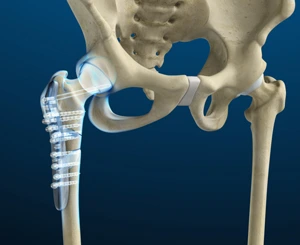
- The surgeon makes an incision (cut) at your hip and then realigns your fractured bones.
- The surgeon uses metal hardware to align your fractured bones permanently.
- the hardware includes pins, plates, screws, and rods.
- Once you have fully recovered, regular walks of 20 to 30 minutes, 3 to 4 times a week, will help you gain muscle power and endurance also.
Physiotherapy treatment
- Physiotherapy is extremely important for early weight-bearing and returns to play following avulsion injuries.
- The initial goal for an avulsion fracture of the hip is to minimize pain, and swelling and improve strength and range of motion.
Healing time
- Avulsion Fractures of the Hip take about 4-6 weeks to heal.
- The professional suggests rest and time on crutches or other walking aids.
- When the injury initially occurs, putting an ice pack on the injured area for about 15 to 20 minutes over 4-6 hours of intervals over the course of two to three days is advised.
Exercise
Strengthening exercise (do this after the bone is healed)
Hip abduction (supine)
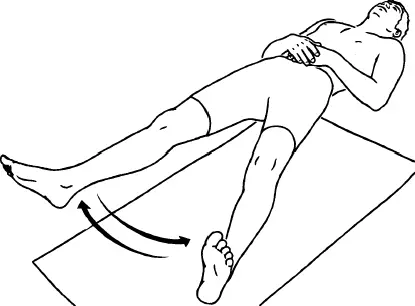
- First, take a supine position by Keeping your leg straight.
- Slide your leg out to the direction side and backward.
- Movement should be done in a pain-free range.
- Do not cross the midline.
- do this for 2 to 3 times a day with 10 to 12 reps.
Ankle Pumps
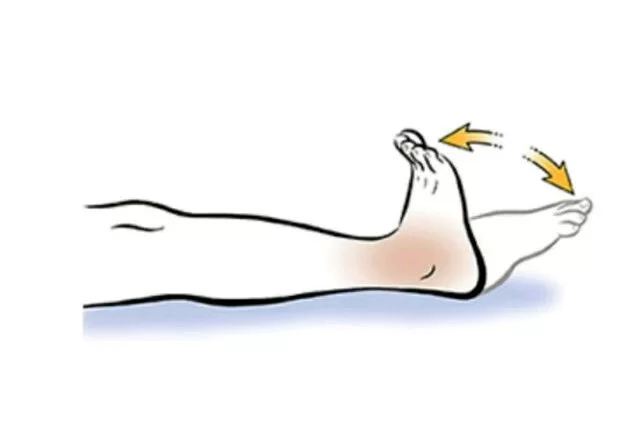
- first, take a supine (lying) position, and slowly push your foot up and down.
- Repeat this exercise several times, every 10 minutes.
- While watching television or you’re doing rest, you should pump your feet every time a commercial comes on.
- Start this exercise immediately after a day of surgery and continue it until you are fully recovered.
Ankle Rotations
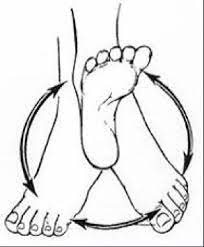
- Move your ankle inward and outward from the other foot repeat this exercise several times in each direction.
- This exercise should take more time than ankle pumps.
- Do 3 to 4 sessions a day.
Bed-Supported Knee Bends (heel dray)
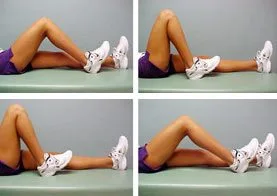
- First, take a supine position and slide your foot toward your hip, bending your knee and keeping your heel on the bed throughout the movement.
- the movement should be done in a straight manner and pain-free range.
- Hold your knee in a maximally bent position where you feel no stretch or severe pain and hold it for 5 to 10 seconds.
- Straighten your leg while this your foot should be touching the ground or bed throughout the movement.
- Repeat 10 times and do 2 to 3 times a day.
- Do 3 to 4 sessions a day.
Buttock Contractions (static gluteal exercise)
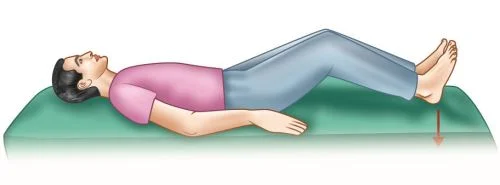
- Tighten your buttock muscles and hold to a count of 5 by pressing the back of your head and heel at the same time against the ground or bed in the supine position.
- Repeat 10 times.
- Do 3 to 4 sessions a day.
Abduction Exercise (standing)
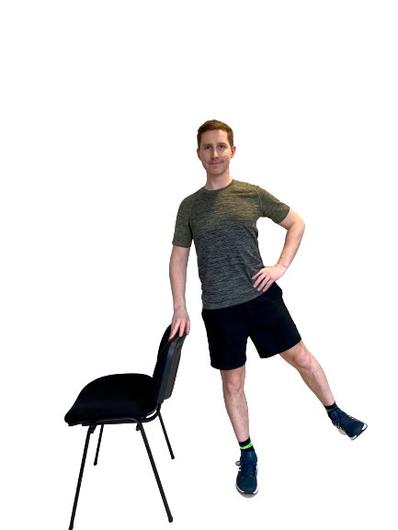
- Standing on the unaffected leg.
- Slide your leg out to the opposite of the other leg and another leg should be straight and stable.
- side as far as you can and then back to the starting position.
- if it’s not done by yourself ask the professionals or any family member to give support throughout the movement.
- Repeat 10 times.
- Do 3 to 4 sessions a day.
Quadriceps Set (static quadriceps exercise)
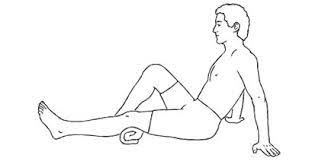
- Tighten your thigh muscle. Try to straighten your knee. Hold for 5 to 10 seconds. by putting some soft object like rolling a towel or smiley ball just below the kneecap or patella.
- Repeat this exercise 10 times in a 10-minute period, take some rest, and repeat.
- Continue until your thigh feels fatigued.
Straight Leg Raises (SLR)

- In the supine position contract, your thigh muscle with your knee fully straightened on the bed.
- Then lift your leg to several inches, if possible by your self if it’s not then ask the therapist to support you throughout the movement if pt hasn’t have enough strength to lift up.
- Hold for 5 to 10 seconds.
- Slowly down your leg to the ground or bed.
- Repeat 10 to 12 times.
- do this 2 times\day.
Stretching (after the bone will completely heal)
- Stretching helps to increase the range of motion.
Standing Iliotibial Band Stretch
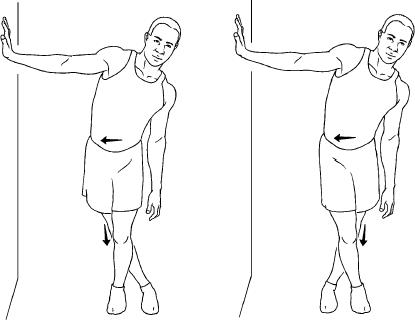
- stretching the outside of the hip.
- standing with the support of the wall.
- Cross your leg which is near the wall behind the other leg.
- Take your hip toward the wall until you feel a maximum stretch at the outside of your hip movement should be pain-free.
- Hold the stretch for 30 seconds.
- Cross the leg behind your other leg which is far from the wall and movement should be within a pain-free range.
- do this for 2 to 3 times with 10 to 12 reps.
Hamstring Stretch

- This will stretches the back of your thigh and behind your knee.
- Lie on the floor with both knees completely straightened without a small degree of bend.
- Lift one leg from the floor and bring the knee toward your chest by keeping another leg stable.
- Then grasp your hands behind your thigh below your knee and press them towards you.
- Straighten your leg and then pull it slowly toward your chest until you feel a maximum stretch behind your thigh.
- Hold for 30 seconds and then relax.
- Repeat on the other side then repeat the entire sequence three times on both legs.
- Tip: Don’t pull at your knee joint.
Hip Flexor Stretch
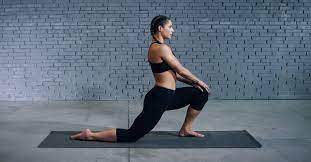
- Stand in a wide walking position.
- You should put both of your hands on firm support in front of you if you feel unstable.
- Lean forwards and bend your front knee first, push your hips forwards and keep your back straight throughout the movement.
- You may feel a stretch in the front of the hip and thigh of the back leg.
- Hold for 20—30 seconds.
- Do this 2 to 3 times a day.
For pain relief and reduces swelling after the bone is completely healed (Modality is contraindicated after surgery)
- Transcutaneous electrical nerve stimulation (TENS) for short-term pain relief for muscle pain, and stiffness, how TENS can scramble your brain’s perception of pain by stimulating nerve supply and give instant relief over some times.
- Interferential Therapy (IFT) stimulation is very useful in the treatment of circulatory and muscular disorders, stiffness of joints after fracture, and inflammation.
interferential current therapy is a very important option for pre-operative conditions mostly.
- Use hot or cold packs.
- Eat a balanced diet.
- Lose weight.
- Get enough rest.
- Manage stress.
- Try splints, braces, and other aids.
- Seek support.
What actions or exercises should you avoid during an avulsion fracture of the hip?
- There are particular types of exercises and actions that people should avoid during hip fractures.
- Some actions increase joint contact stress, putting the joints under more pressure than trusted Sources and potentially resulting in the severe hip or muscle pain in a person with an avulsion fracture of the hip.
Bending too much at the hip
- Most exercises for hip pain will involve bending at the hips more than any joints, those exercises put too much strain on your hips.
- You should avoid this type of exercise that causes more strain and pain when bending at the hips.
- Do exercises that require more knee movement than the hips.
- These may help take some strain off the hips while strengthening the muscles which connected to them.
High-impact exercises
- Step aerobics and other workouts that involve jumping mainly impact the hip joint.
Heavy weightlifting exercises
- Bending too much at the hip, Strengthening exercises, which include heavy weightlifting, can be harmful to people who have avulsion hip fractures.
- However, if a person does not perform the exercises in the right manner may worsen pain and cause further joint injury because Lifting heavy weights with the legs puts a severe strain on the hips and muscles.
Over-stretching
- Remaining in the same position for too long causes severe hip pain.
- Regular Stair climbing.
FAQ
The Avulsion fracture occurs when a small fragment of a bone gets stressfully pulled by the tendon or ligament off of the main bone site.
These types of fractures are more common in children and teenagers than adults due to their maturing growth plates.
A fracture occurs when a ligament or tendon is placed under stress beyond the threshold limit.
The ligament or tendon is torn off of a larger bone and carries a small piece of bone with it.
Avulsion Fractures of the Hip take about 4-6 weeks to heal.
The professional suggests rest and time on crutches or other walking aids.
When the injury initially occurs, putting an ice pack on the injured area for about 15 to 20 minutes over 4-6 hours of intervals over the course of two to three days is advised.
Avulsion fractures affect the function and movement of the affected joint.
If it will be left untreated, it can lead to deformity, nonunion, malunion, pain, and disability for a lifetime.
There are particular types of exercises and actions that people should avoid during hip fractures.
Some actions increase joint contact stress, putting the joints under more pressure than trusted Sources and potentially resulting in the severe hip or muscle pain in a person with an avulsion fracture of the hip.
Bending too much at the hip
High-impact exercises
Heavy weightlifting exercises
If a fracture is more serious, involving a bone fragment moving more than 15 mm, the fracture has led to instability within the joint so a doctor may recommend surgery.
Open reduction
The surgeon makes an incision (cut) at your hip and then realigns your fractured bones.
Internal fixation
The surgeon uses metal hardware to align your fractured bones permanently.
the hardware includes pins, plates, screws, and rods.


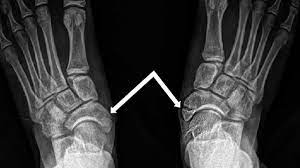

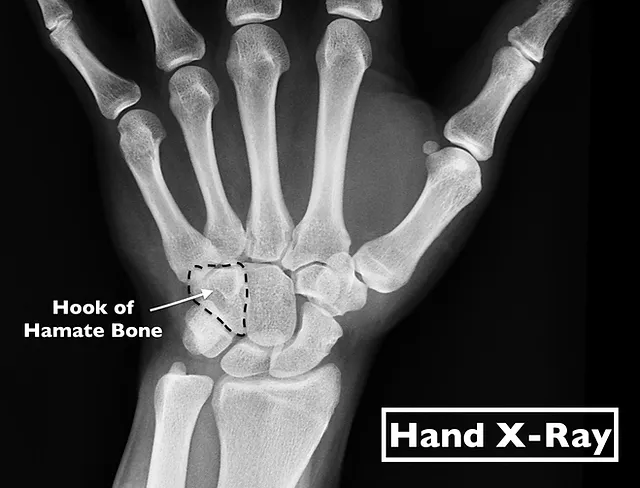
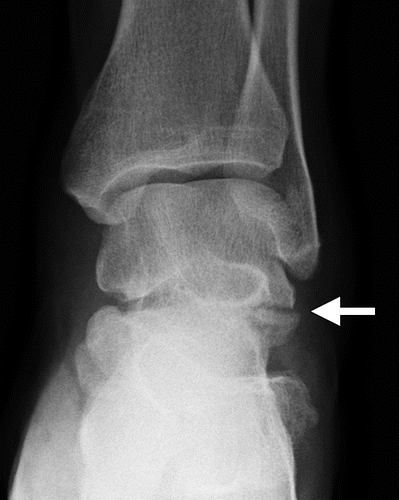
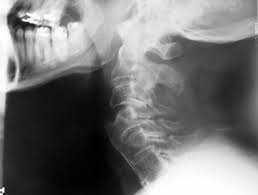
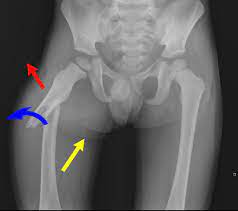
One Comment